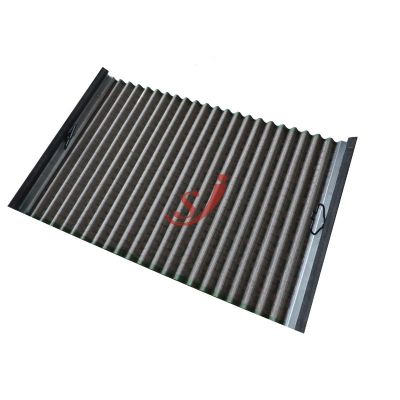Your Position: Home - Other Wire Mesh - Causes and solutions for vibrating screen blockage
Identifying and Addressing the Causes of Vibrating Screen Blockages
Key Factors Contributing to Screen Blockage
Overloading the Vibrating Screen
Each vibrating screen has a maximum processing capacity. When the material input exceeds this limit, the likelihood of blockages increases significantly. This is particularly evident during production when fine particles can infiltrate screen holes, leading to accumulation and eventual difficulty in clearing.
Deterioration of Screen Surface
With prolonged usage, the surface of the scree may suffer wear and tear. This degeneration can cause screen holes to distort or enlarge, hampering the normal passage of material and resulting in blockages.
Insufficient Particle Size
The dimensional configuration of Shale Shaker Screens is crucial for ensuring smooth material flow. When particle sizes are too small, they are prone to clogging within the screen holes. This creates maintenance issues that can complicate operations.
Strategies to Mitigate Screen Blockages
1. Ensure proper installation and maintenance of the vibrating screen. During usage, it's essential to regulate the input volume to prevent an overload of small particles, and also to monitor the usage duration to avert excessive wear or deformation.
2. Regularly clean the screen to remove dust and residue, reducing blockage risks and preserving screening efficiency.

3. Timely replace any worn or damaged screens to maintain optimal operating efficiency and extend the equipment's lifespan.
4. A scientific approach should be taken when selecting screen types. For instance, in situations requiring the screening of fine powder materials below 5mm, specialized fine screens should be utilized with routine dust cleaning applied.
5. For unique material properties, anti-blocking screens like ball screens or multi-angle screens can be specifically utilized.
6. Utilizing high-pressure airflow technology can also alleviate issues related to fine powder material blockages.
7. In case of a blockage, promptly switch off the screen machine's power supply to prevent further material flow or secondary crushing that could damage the equipment. Subsequently, use specialized tools to clear the blockage and restore screening functionality.
8. Regular inspection and maintenance of the screen machine are critical. Swiftly addressing blockage issues can prevent equipment damage and facilitate uninterrupted production.
In conclusion, tackling the obstruction challenges of vibrating screens necessitates implementing a holistic strategy. This includes managing material input, performing routine cleanings, promptly replacing screens, scientifically selecting the screen type, utilizing anti-clogging screen solutions, and incorporating advanced technologies. This comprehensive approach will enhance the effectiveness of vibrating screens and boost production efficiency.
FAQs on Vibrating Screen Blockages
Q1: How often should vibrating screens be cleaned?
A1: Cleaning frequency depends on the type of material being processed but should typically be done daily to maintain efficiency.
Q2: What are the signs of a worn-out screen?
A2: Signs include decreased screening efficiency, visible holes or tears in the screen surface, and frequent blockages.
Q3: Can I use high-pressure air to clear blockages?
A3: Yes, high-pressure air can be effective, especially for fine powder materials, but it should be used with caution to avoid damage to the screen.
58
0
0
Comments
All Comments (0)